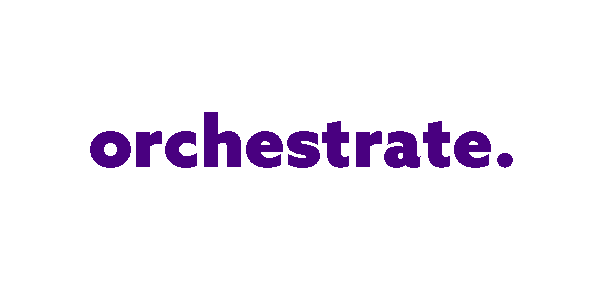Lets talk about content lead digital strategy and it’s importance to business growth. It’s no secret that content is fuel for search engines, so it is somewhat surprising that many kiwi SME executives and marketers ignore the power of content marketing. Every other traffic-driving activity you do will work even better for you (that means lower cost of acquisition) if you have a good content marketing strategy and execution.
Media agencies are likely to dive in and tell you all about PPC, or how to optimise your site for search (which we will talk a bit about), but neither of those activities, alone will get you a significant boost in traffic without content marketing.
What is content marketing and what should you write about?
In general, content marketing is creating content and sharing it to targeted audiences to generate more leads, solidify branding and drive more customers to your website. It’s a form of inbound marketing, where you provide information that respond to the pain points of your prospects who are online looking for answers. Therefore, it is about playing to your strengths and adding value to the sales conversation from the beginning.
While it is a broad topic, I’m going to briefly talk about developing a content marketing strategy and how this will help you to take your marketing efforts to the next level.
For an overall content marketing strategy, you can priorities your medium such as creating videos and ebooks, setting up pay per click campaigns and writing blog posts to maximise audience reach.
In order to maximise traffic, you will want to start with a growth driven website. You can get started simply by writing relevant, fresh content. Whether you’re starting from scratch or need a content marketing evaluation for your existing blogs, there’s an approach for you.
“In order to maximise traffic, you will want to start with a growth driven website.”
Let’s get right into how to do this step-by-step, with content marketing tips that will get you started on the path to traffic growth.
Step 1: Use Google to research content about your industry or vertical
First, go to Google and type in something along these lines;
news about “your industry”
top stories about “your industry”
blogs “your industry”
press release “your industry”
This will bring up the latest information about “your industry.”
Step 2: Establish industry content gaps on where you can earn backlinks
If your goal is to drive more traffic to your website, then you will be rewarded by having as many backlinks as possible on your site. The best way to obtain backlinks is from powerful blogs and influencers in your Industry.
Your can learn more about backlinks here
This is an easy to execute but effective tactic to making content marketing work for your business.
That Google search you did in step 1 is going to be important. Look at what Google suggests at the bottom of the page based on your search. This gives you a clue to how Google categories content for this search in your industry.
Step 3: Use free tools to analyse your competitors site and content
Next, open BuzzSumo.com and use the free content research tool or alternatively you can download the MOZ extension for Chrome and utilise ‘Open Site Explorer’
Enter your competitor’s website and click search. This will show you the most recent content created by that competitor as well as what social media platforms their content has been shared on the most.
Now you can set a goal to write a piece of content on the same topic that is exponentially better than what you competitor did, and then share that with the right audience to earn it the distribution you know (thanks to free tools like Buzzsumo) it can achieve.
Step 4: Spend the time to understand your audience
Summaries each of your buyers in a few bullet points prioritise psychographics not just demographics. Done right each of your target audience profiles (or buyer personas) should be a rich profile that accurately captures the most important motivations of a given target audience sector. This results in a powerful guide to help you write and design your content in a way that speaks with your buyers as opposed to at them.
You can learn more about buyer personas at the buyer persona institute.
Get this right and it will lead to revenue riches, I’d suggest you involve everyone in your organisation when developing your buyer personas, and engrain them into your organisational culture.
Now that you have your content down, its time to start promoting it and sharing it with your target audience. What is the best medium for it? You can start by prioritising things like the size and scope of the content topic, the need to gate behind a form, share-ability, etc.
Step 5: Become an expert – Use your owned channels to promote content
Becoming a recognised expert in your field creating a position of thought leadership is highly impactful way to get more traffic to your owned channels (blogs, newsletter, website, etc). People will look to you to provide valuable content and may ask you to contribute to high ranking blogs –– which gets you those valuable backlinks.
Step 6: Social Media – How should you share your content?
Start out by determining where your target audience spends most of their time. Social Media Marketing is just one facet of your overall promotional strategy but it’s a very important one. You might want to learn about the demographics of each social media platform so you can decide which one to target for your marketing strategy.
Linkedin.com: As you are most likely going to want to target business minded individuals then I would absolutely suggest linkedin.com as your first promotional social channel.
Instagram.com: Instagram is very visual social media place. If you have a product that has lots of great images then this may a place to show off your product.
Twitter.com: If most of your product is informational and text driven then you might want to use Twitter as this will allow you to give a short description of what you just wrote about on your blog or website and point users to it. It is a better way of letting your users know there is new content and a short description of what is it about without sending out an email every time.
Step 7: Guest Blogging – How to create more backlinks for you content
Guest posting on blogs or similar websites is a great way to get more traffic. Once you find blogs with similar content, you can ask if they accept guest posts. If so you can write a great article on their website and get a link back to your website in return.
Search for blogs that write about your Industry. Links from websites that relate to yours will help you more in Google than a link from a random website that does not relate to your business.
Step 8: PPC Campaigns – How to advertise your content
You can use Pay Per Click (search engines, linkedIn, etc) to get immediate traffic, but just make sure you have a plan for what you will do with the traffic. Are you trying to get sales? Build up your email list? Solidify your brand in the marketplace?
Your goal will determine how you setup your campaign and how long you run it. Usually this is more of a long-term investment than merely an immediate revenue-generating strategy. You can also use PPC to help determine what content to target in the long term based on testing and results. You should also use PPC to determine what content converts the best so that you can determine which keyword phrases to target for the long term.
You don’t want to build out a content marketing strategy and write random articles that do nothing for your sales or that don’t help you reach your goals. You can find out fairly quickly what content users want through PPC by monitoring not just clicks or traffic, but actual conversion. From there, you can determine which content you should invest more time and money into creating. A couple of cool ways I have found to do this is to answer questions for users (and don’t try and sell something to them). Give away value and people will want to eventually pay for your expertise.
Step 9: Create Valuable Assets to Download
Create downloadable content about how to “resolve a specific problem” that will help others in your Industry. The content can come in many different forms such as infographics, e-books, white papers, checklists, video, webinars, interactive widgets, etc. Regardless of the medium if the content is good enough you may get links back to your website by others using this to add value to their audience.
Once you’ve built your content break it out into lots of bits and serve it in different mediums so you can make it go further and promote it in loads of different places.
So now you’ve created content and prospects are engaging with it, you can’t simply unleash your sales animals on every unsuspecting prospect who downloads an ebook? You need to be scientific about it. Using lead nurture will allow you to use your content where it belongs in a prospects journey (instead of throwing it at everyone who is in your database). Without lead nurturing, leads who aren’t ready to buy will simply fade away—and that’s a lot of effort, time and resource wasted.
Lead nurture provides the rules for a process that builds effective relationships with your potential customers. Your potential customer is served content that is relevant to them based on perhaps the stage of the buyer process, or their customer profile and likely pain-point. Sales are notified to make contact only once the prospect is qualified as a potential customer.
I’ll cover lead nurture in more detail in a future blog, if you are keen to learn more on the process now I’d recommend downloading this great guide from the team at Marketo.
Final Word on Content Marketing
Pulling more traffic to your website is only the first step in growing your business. Once you have them there, you want to engage those users, build trust and move them through the buyer stages creating sales ready leads for your sales team to convert.
This is why a content strategy is so helpful. You can use content in ads to pull customers in, then engage them in that content to prove your expertise which will earn you trust for the long term. You aren’t going to convert every single visitor to a sale the very first time they land on your site, and your not going to see an instant response. If you’re serious about generating traffic you also need to pay attention to the quality of your links. Make sure you are systematic with how you create and promote your content, otherwise you’re at risk of producing stuff in the hope that it will engage your audience.
And, if you don’t have a marketing automation and lead nurture platform then you’re going to find this tough, I’d recommend you tick that box and get one!
Content marketing is a long-term play that will help you build a scalable, sustainable business long into the future. And once you have your strategy in place, you need a team to execute — but that’s a discussion for another day.


